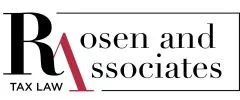Payroll audits are a critical aspect of tax compliance for businesses in Canada. These audits, conducted by the Canada Revenue Agency (CRA), ensure that businesses are correctly withholding and remitting payroll taxes. Failing to comply with these regulations can result in significant penalties and interest charges. Here's an in-depth look at payroll audits, their implications, and how businesses can prepare.
What Triggers a Payroll Audit?
Several factors can trigger a payroll audit by the CRA:
- Random Selection: The CRA routinely selects businesses for audits to maintain the integrity of the tax system (this can either be done by revenue, types of business, etc.).
- Discrepancies in Filings: Inconsistencies between filed payroll amounts and other financial records can raise red flags.
- Third-Party Tips: Tips from employees or other informants can prompt an audit.
- Associated Audits: If a related business or partner is audited, your business may also be reviewed.
Key Areas of Focus in Payroll Audits
The CRA examines several areas during a payroll audit:
- Employee Classification: Correctly distinguishing between employees and independent contractors is crucial. Misclassification can lead to significant penalties.
- Withholding Amounts: Ensuring that the correct amounts are withheld for income tax, Employment Insurance (EI), and the Canada Pension Plan (CPP).
- Remittance Compliance: Verifying that all withheld amounts are remitted to the CRA on time.
- Record Keeping: Maintaining accurate and complete payroll records, including T4 slips, payroll ledgers, and employee contracts.
Common Issues Found in Payroll Audits
Some common issues that auditors often discover include:
- Incorrect Employee Classification: Businesses sometimes classify employees as contractors to avoid paying EI and CPP. This misclassification can lead to back payments and penalties.
- Underreporting Wages: Failing to report bonuses, overtime, or other compensation accurately.
- Late or Missing Remittances: Not remitting the withheld amounts to the CRA on time or at all.
- Incomplete Records: Inadequate documentation to support payroll filings and remittances.
Consequences of Payroll Audit Failures
Non-compliance discovered during a payroll audit can result in several consequences:
- Penalties and Interest: The CRA can impose penalties for late or incorrect remittances and charge interest on unpaid amounts.
- Reassessments: The CRA may reassess your tax returns, leading to additional taxes owed.
- Legal Action: In severe cases, ongoing non-compliance can result in legal action against the business and its owners.
Preparing for a Payroll Audit
To prepare for a payroll audit, businesses should:
- Review Classification Practices: Ensure that all workers are correctly classified.
- Audit Payroll Records: Regularly audit your payroll records to ensure they are complete and accurate.
- Timely Remittances: Ensure all payroll remittances are made on time.
- Seek Professional Help: Consider hiring a tax professional or accountant to review your payroll practices and records.
Steps During a Payroll Audit
When notified of a payroll audit, businesses should:
- Gather Documentation: Collect all relevant payroll records, including T4 slips, contracts, and remittance records.
- Cooperate with the Auditor: Provide the requested information promptly and fully cooperate with the auditor.
- Review the Audit Report: Once the audit is complete, review the auditor's findings carefully.
- Address Issues: If any discrepancies are found, address them immediately to avoid further penalties.
Conclusion
Payroll audits are an essential aspect of maintaining tax compliance for businesses in Canada. By understanding what triggers these audits, focusing on key compliance areas, and preparing adequately, businesses can navigate payroll audits effectively. Ensuring accurate employee classification, timely remittances, and meticulous record-keeping are crucial steps in avoiding the pitfalls of a payroll audit. For ongoing compliance and peace of mind, businesses should consider consulting with tax professionals to review and improve their payroll practices regularly.
By following these guidelines, businesses can reduce the risk of penalties and maintain a smooth relationship with the CRA, ensuring that payroll processes remain compliant and efficient.
The content of this article is intended to provide a general guide to the subject matter. Specialist advice should be sought about your specific circumstances.



